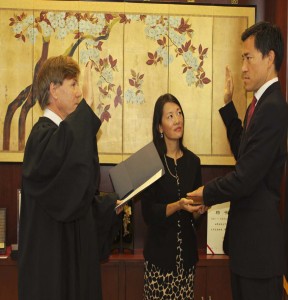Practitioners might not be aware that they have the opportunity to request that Board opinions be made “precedential.”
III. Criteria For Identifying Candidates To Be Made Precedential
A. The Board’s policy shall be to limit opinions which are candidates for being made Precedential to those meeting one or more of the following criteria:
1. The case is a test case whose decision may help expedite resolution of other pending appeals or applications.
2. An issue is treated whose resolution may help expedite Board consideration of other cases or provide needed guidance to examiners or applicants pending court resolution.
3. A new rule of law is established.
4. An existing rule of law is criticized, clarified, altered or modified.
5. An existing rule of law is applied to facts significantly different from those to which that rule has previously been applied.
6. An actual or apparent conflict in or with past holdings of this Board is created, resolved, or continued.
7. A legal issue of substantial public interest, which the Board has not treated recently, is resolved.
8. A significantly new factual situation, likely to be of interest to a wide spectrum of persons other than the party (or parties) to a case is set forth.
9. A new interpretation of a Supreme Court decision, a decision of the Court of Appeals for the Federal Circuit, or of a statute, is set forth.
B. The purpose of a Precedential opinion is to create a consistent line of authority as to a holding that is to be followed in future Board decisions.
C. Disposition by nonprecedential – Informative or Routine – opinion does not mean that the case is considered unimportant, but only that a Precedential opinion would not add significantly to the body of law.
D. The Director, the Patents Operation acting through a Commissioner or Assistant Commissioner, the appellant, a third party member of the public, or any judge may request in writing that an opinion be made Precedential, by forwarding that request, along with accompanying reasons, to the Chief Judge. Typically, this request should be received within 60 days after the opinion is issued. The request and subsequent response shall be filed separately from the official record.
IV. Procedures For Adoption Of Binding Precedent
A. Any opinion of the Board satisfying one or more of the criteria identified in Section III above may be adopted as Precedential, either at the time of its entry or subsequent to entry, provided that the following steps are followed.
1. A majority of the merits panel that is entering or has entered the opinion agrees that the opinion should be Precedential.
2. If the Chief Judge considers the opinion an appropriate candidate for being made Precedential, the Chief Judge will circulate the opinion under consideration for designation as Precedential to all of the judges.
3. Within a time set in the notice circulating the opinion (typically two weeks from the date of the notice), each judge shall vote “agree” or “disagree” (without further written comment or written discussion) on whether that judge agrees the opinion should be made Precedential. Barring extended unavailability (as in the case of serious illness), each judge has an obligation to vote “agree” or “disagree.” If a judge does not communicate a vote within the time set, then the judge’s vote will be normally considered to be in agreement that the opinion be made Precedential.
4. If the Chief Judge considers that a sufficient majority of those voting agree that the opinion should be made Precedential, the opinion (along with the numerical results of the vote) will be forwarded to the Director, or the General Counsel acting by delegation on the Director’s behalf, for review. If the Chief Judge does not consider that a sufficient majority of those voting agree that the opinion should be made Precedential, the opinion will not be forwarded for review.
5. If the Director, or the General Counsel acting by delegation on the Director’s behalf, agrees that the opinion should be made Precedential, the Director or General Counsel will notify the Chief Judge of that determination.
6. The opinion is then published or otherwise disseminated following notice and opportunity for written objection afforded by 37 CFR § 1.14, in those instances in which the opinion would not otherwise be open to public inspection.
B. Opinions entered by expanded panels do not automatically become Precedential, but instead are subject to the procedures of this SOP. However, a prior Precedential opinion of a prior panel of the Board may only be overturned by an opinion of an expanded panel that itself has been made Precedential or pursuant to an event set forth in Section VI.D. The authoring judge for any decision by an expanded panel shall call the Chief Judge’s attention to the opinion prior to entry of the opinion so that consideration of whether the opinion shall be made Precedential can occur in advance of entry.
C. The Chief Judge will determine if the opinion is an appropriate candidate to be made Precedential. If the Chief Judge is convinced that the opinion ought not to be made Precedential (e.g., because the Chief Judge believes the opinion does not meet the criteria of Section III above), the Chief Judge is under no obligation to consult other judges.
D. Where a written request for a Precedential opinion has been received, the Chief Judge shall prepare an order indicating that the opinion has, or has not, been adopted as precedent of the Board under the procedures of this Standard Operating Procedure.
E. The opinion will become Precedential upon being published or otherwise disseminated. Precedential opinions will be posted at:
http://www.uspto.gov/web/offices/dcom/bpai/prec.htm.
F. Clearance for publication, if needed under the rules, will be obtained by the Chief Judge.
(Emphasis added).
